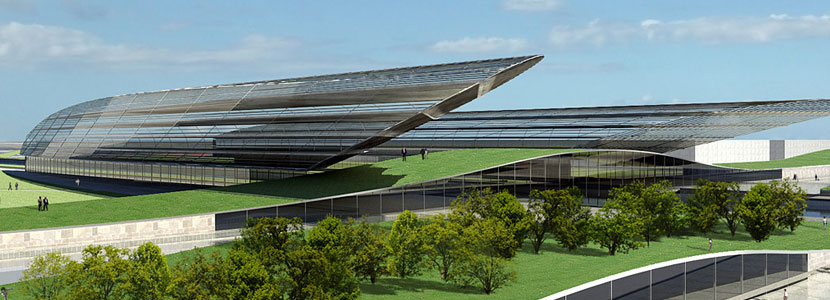
The new headquarters for CCTV, China's state television network, will most resemble a cartoon version of the letter "Z." At 230 meters high, the brightly colored, continuous loop with no right angles will tower over every other building in the city upon completion by 2008.
Next door, a companion structure will take on the shape of a trapezoidal boot. These will provide more than 550,000 square meters for CCTV studios, offices, exhibitions and a hotel. Each of the unconventional structures would stand out in any city, at least upon this planet.
Yet, across Beijing, the once-stodgy urban landscape is sprouting a number of other avant-garde structures, all designed to prove the communist capital isn't so much old fashioned, as innovative, artistic, with-it. Nor is this merely a Beijing phenomena. From Chongqing to Xiamen, Chinese cities are falling over themselves in the race for flash architecture, the perceived badge of hip. Shanghai has its shelter-skelter skyline, and Shenzhen sports a Viva-Las-Vegas look. Beijing, however, had always been content to be square.
Not anymore. In fact, even Cold War throwbacks like Tiananmen Square no longer offer respite. Behind the Great Hall of the People, a site the size of four soccer pitches incubates a structure that some call the "Alien Egg."
In a daring design by French architect Paul Andreu, the three halls that comprise the new National Theater are tucked inside an egg of titanium and glass. When it opens within the year, this striking egg will float upon an artificial lake, currently at the moat stage. Visitors will enter by escalator and appear to plunge into the water--with Mao's portrait at the Forbidden City behind them.
